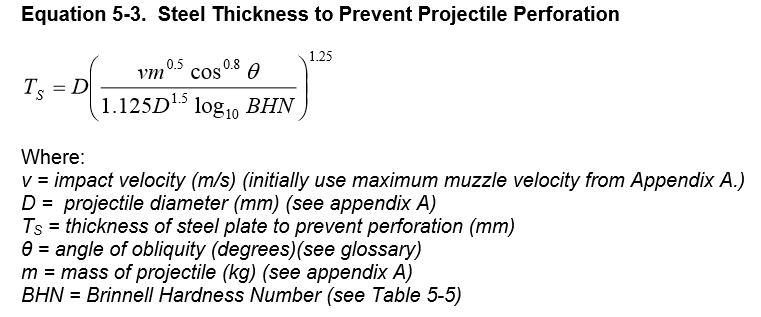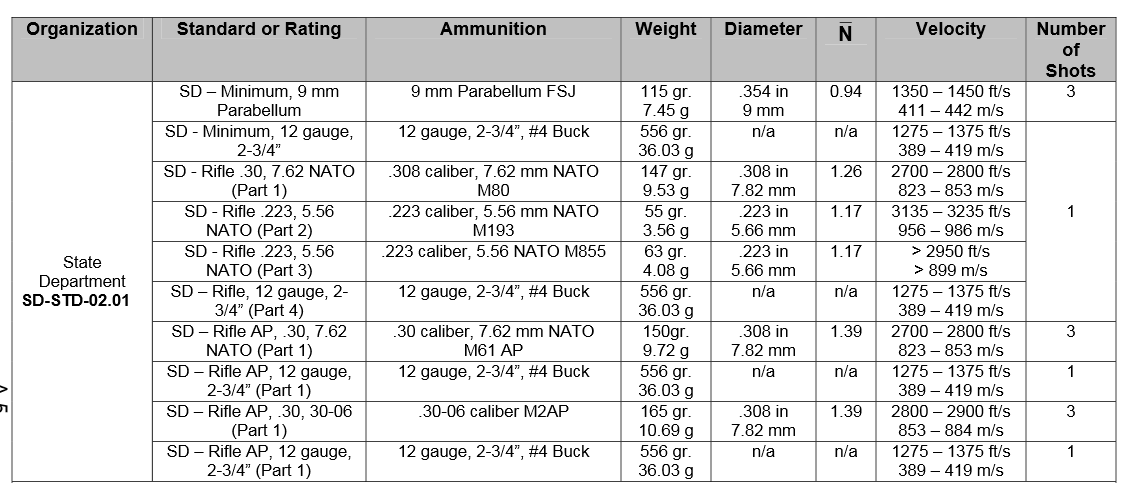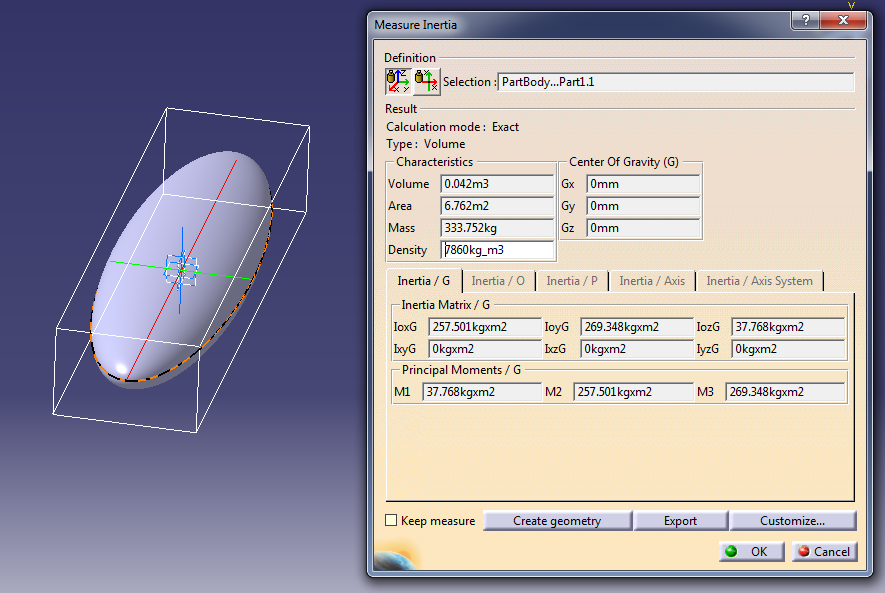Honestly weird, there is no valid reason to try to keep the operator on their feet under that kind of kinetic force, what the armor has to do is keep the soldier alive, not turn him into a one-man Abrams. All the plating a suit of viable PA needs to do is disperse the force, just like a Kevlar vest only heavier, that way you have still made the soldier functionally invulnerable to small arms and allow him/her to survive against heavier weapons. It is not unimaginable that such a system could come in at under five hundred pounds, including power supply (depending on your willingness to spend money.) We don't actually have a need for Glitterboys, just T-51.
You are very much underestimating how heavy a T-51 is going to be.
To stop small arms fire, you need either steel plate that is about a quarter inch thick, or some kind of hybrid plate with ceramic.
There is an equation for this,
from this source document5-3.4.2.1.2. Steel.
The projectile velocity at which a given
type and thickness of steel plate can prevent
perforation is commonly referred to as the limit
velocity. Equation 5-3 is a manipulation of
the limit velocity equation for steel to give
plate thickness. Note that the thickness
reported by Equation 5-3 is what is necessary
to stop complete perforation (the projectile
passing completely through the plate and
emerging with zero velocity).
That represents a safe condition for most
applications, although there are times
when ensuring that there is no rear face
spalling is necessary. In those cases, add two
bullet diameters to the plate thickness
determined from Equation 5-3.
Note that Equation 5-3 is only valid for
calibers of 0.50 (12.7 mm) or less. For
larger calibers, refer to UFC 3-340-01.
If the plate thickness is less than that given
in Equation 5-3, the bullet will pass
through the plate with a residual velocity,
which can be predicted using Equation 5-4.
That residual velocity could then be applied to
another material layer.
In doing so, it is commonly assumed (conservatively)
that the bullet retains all of its mass.
In that equation, impact velocity can initially
(conservatively) be taken to be muzzle velocity.
Where the equation is used to evaluate multiple
protective layers, the residual velocity
would be used as the impact velocity in equations
5-3 or 5-4 or in other similar equations
for other materials.

And here is the "Appendix A" they are referring to.

For an example of a real world product intended to help people survive small arms fire, here's a commercial offering.
http://shop.tacticalshit.com/10x12-armor-plate-steel-defender-newIt is a 10in by 12in, by .24in steel plate with a brinell hardness of 500. It weighs 7.5lbs, give or take. With this type of steel plate, we can extrapolate how much a suit of power armor will weigh, with JUST the plate. (Not counting the actuators, the weight of the hydraulic fluid and pumps, the weight of the fuelcell and electronics-- or all that other stuff that makes it into power armor and not just steel plate armor.)
I will do a very rough estimation of a human's volume, expanded 1/4 inch in thickness as a shell in my preferred CAD software, apply a suitable material to the resulting shell, and get the calculated mass.
I am assuming an ellipsoid volume of 5.5ft (tall) by 1.5ft(wide) by 1ft(thick) as the basic volume of a typical human body. I am then going to extrapolate a 1/4in thick steel shell, and measure the mass in the software.
I get the following result.

This gives us a rough mass of the needed steel plate of approximately 333.75kg, which is 735.7928lbs
This is actually CONSERVATIVE, because wolfram gives an average volume of a human body of 66.4L, which works out to 0.0664 cubic meters. As you can see from the CAD software, the volume I worked with, when extrapolated with the .25in thick plate, is only .042 cubic meters. That means the actual plate weight will be LARGER than this rough estimate!
So, I will say again, for the power armor to be useful as power armor, it is going to weigh a shit ton. With the weight of the occupant, fuel, actuators, and all that shit, we are talking over 1000lbs for the ensemble-- easy.
That's assuming it is made of steel, of course.

 Author
Topic: Ways to prevent electricity from damaging power armour (Read 9303 times)
Author
Topic: Ways to prevent electricity from damaging power armour (Read 9303 times)
